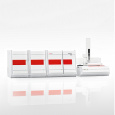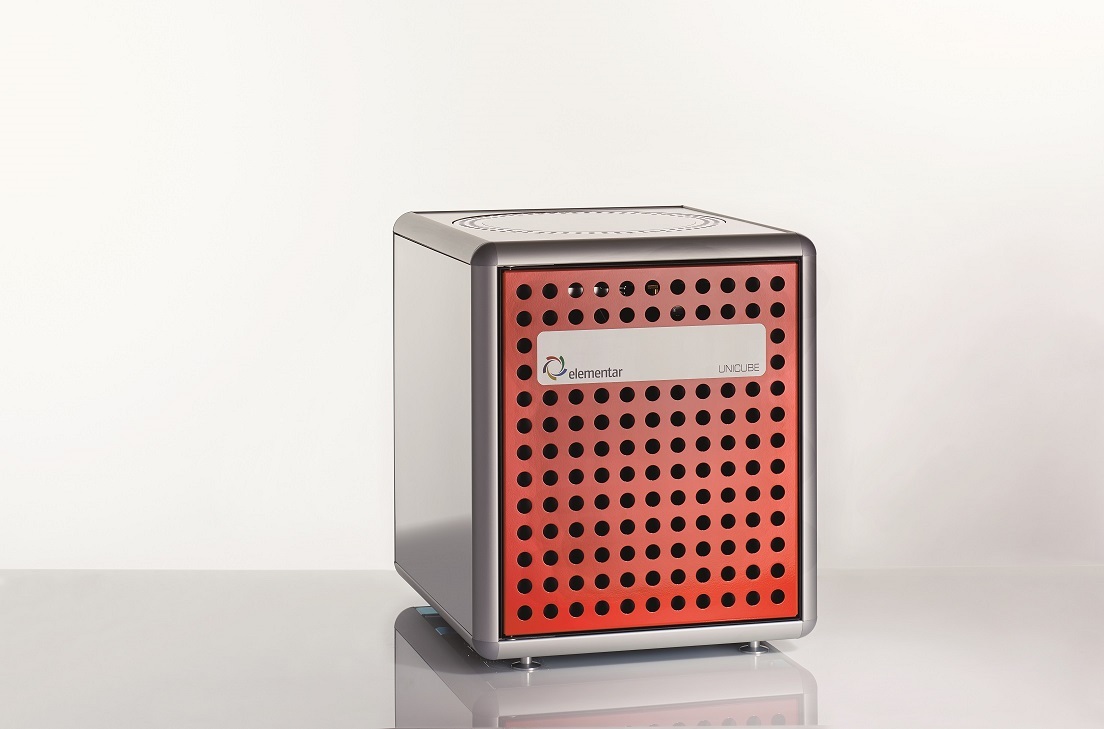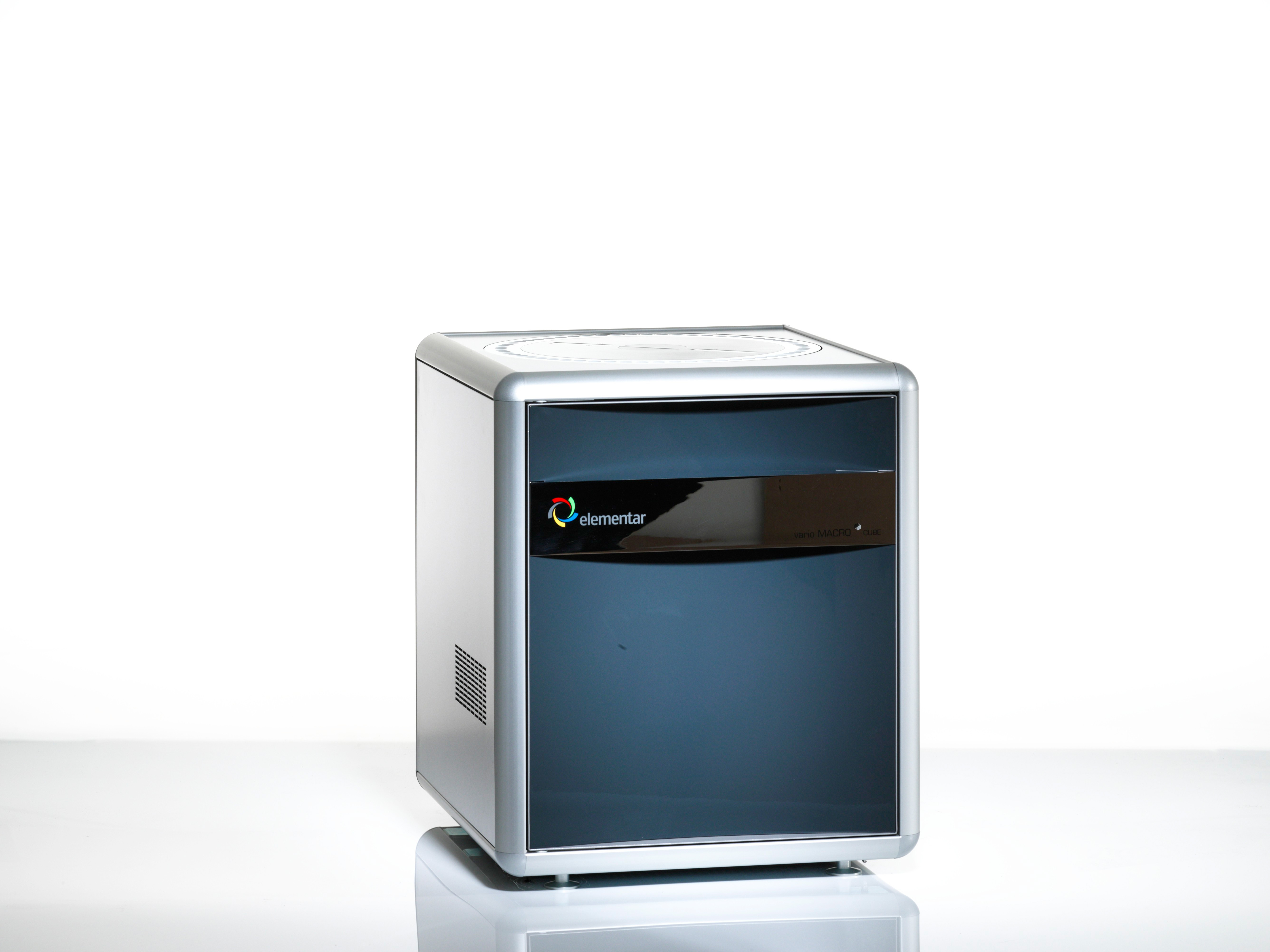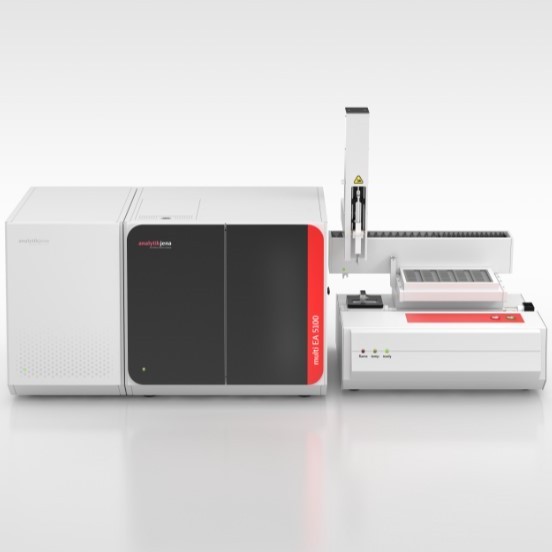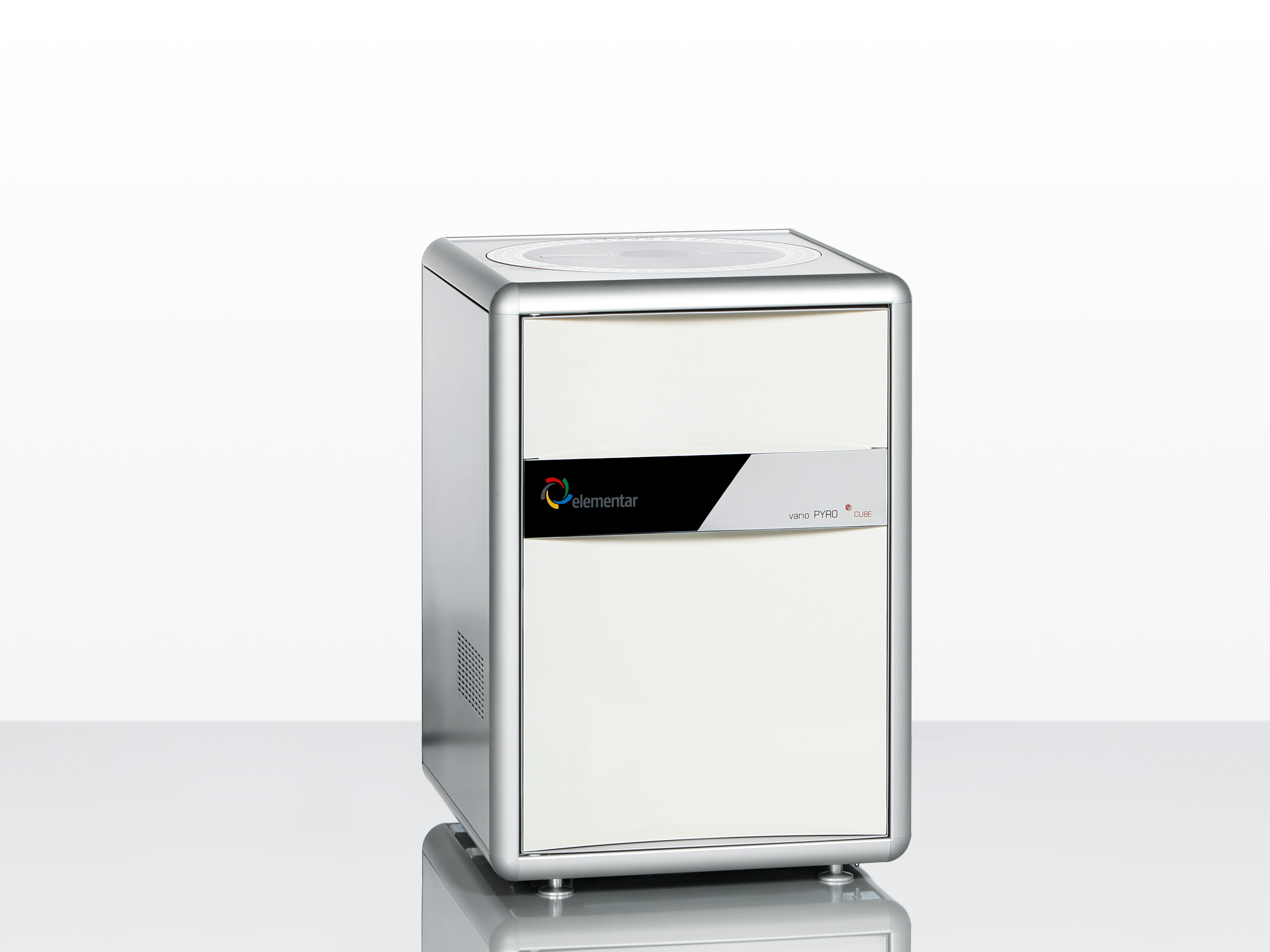
方案详情
文
multi EA 5000 集多个检测模块于一身,可用来检测固体,液体,粘稠性物体和气体/液化气中的硫,氮,碳,氯含量,由于它的革新技术,multi EA5000 仪器有很宽的应用范围,并且具有很强的适用性和灵活性,是各行业高效的检测工具。
方案详情

analytikjena Fields of Application/Industry:c Chemistry/Polymer Industry Clinical Chemistry/Medicine/Hygiene/Health Care Electronics Semi-Conductor Technology Energy ■Environment/Water/Waste Geology/Mining Food/Agriculture Metallurgy/Galvanization Refineries/Petrochemistry Pharmacy Cosmetics Material Analysis Others Automated Chlorine Analysis for Refuse Derived Fuels Author: Dr. Angela Grobel, Product Manager, Analytik Jena AG,Konrad-Zuse-Str. 1, 07745 Jena,Germany During the last years, thermal recycling of waste fractions with a high heating value in the form ofrefuse derived fuels continually has gained in importance. This efficient type of waste recyclingbecomes more and more attractive due to the growing scarceness of fossil fuels and the relatedrise in prices. The problem that occurs during the combustion of such materials consists in theirstrongly varying composition and the high content of hazardous substances. Especially chloriccompounds (PVC) have a negative impact. During combustion, they release HCI gas which notonly is an undesirable environmental pollutant but also can cause damages in the combustionsystem itself (encrustation in the heat exchangers, clogging of cyclone nozzles, corrosion). Therefore it is indispensable to carefully check the chlorine contents of the used combustibles. Refuse derived fuels The generic term refuse derived fuels comprises all liquid and solid combustibles of a non fossilorigin. They are extracted from fractions of commercial and municipal waste with a high heatingvalue and mainly consist of materials such as tires, plastics, paper fiber residues, matured timber,sewage sludge, asphalt sludge, waste oil, vegetable matters etc.. Refuse derived fuels mainly areused in power or heating stations and in the cement industry. Here these cost-saving substitutefuels replace the conventional energy sources partly up to a degree of 30 %. In order to guaranteea constant quality, important parameters as heating value, ignition residue and the content ofimpurities must be checked permanently. If the specified maximum permissible values areexceeded, not only the efficiency of the combustion process will decrease but also themaintenance effort may rise and the combustion systems may suffer from considerable damages.Especially chlorine plays an important part within this context. An excessive Cl content (>1 wt-%)leads to an increased HCI emission and thus to incrustation (precipitation of alkaline and heavymetal chlorides) on important reactor parts until the destruction of the heat exchangers. In order toprevent this in advance, it is very important to determine the element chlorine precisely andquickly. To this purpose, different methods have been established (e.g. XRF, Schonigercombustion, Wickbold or bomb digestion). However, they require high efforts with regard topersonnel and time, and in most cases, a complete automation is impossible. multi EA 4000 Cl offers a quick and reliable alternative. It combines the efficient high temperaturecombustion with coulometric titration. The whole analysis process - from sampling to themeasuring result -is automated. The secret is in combustion As much as these combustibles differ with regard to their composition, as much they differ withregard to their requirements to the analysis technology. Their combustion characteristics and theirchlorine contents vary within a wide range (ppm -wt-%). The inhomogeneity of refuse derivedfuels either requires a time-consuming sample preparation or the use of samples in large andrepresentative quantities. Only a quantitative digestion of all matrix components makes it possible to determine the chlorinecorrectly. When you convert organic matrices in a pure oxygen flow in a quick and uncontrolled way, theytend to produce soot very easily. An increasing sample mass also leads to an increasing risk. Anincomplete combustion not only has a negative impact on the results (false low results, scatteringof results) but also on the maintenance requirements of the system. Thanks to its intelligent flame sensor technology, the multi EA 4000 automatically adapts thecombustion process to the individual needs of each sample component. Thus the operator canrealize an optimal combustion without any effort and independently from matrix or mass. The multiEA 4000 is a robust high temperature combustion system, specially developed for theanalysis of the most different solids. By adding auxiliary materials, it also is possible to analyzeviscous, high-boiling liquids (waste oil, tar). Thanks to a variable measuring gas splitting, you candetermine the chlorine contents within a wide concentration range (1 ppm-20 wt-%). Due to the remarkably high sample capacity of up to 3 g, you can dose representative quantities ofeven inhomogeneous materials also without any previous homogenization. Thus you can measurewithout any problems even materials as e.g. chopped plant remains while benefitting from a goodreproducibility. Automated Cl determination The refuse derived fuels were analyzed directly without any further pretreatment using themulti EA4000. The samples were dosed and transferred automatically by means of the solidsampler FPG 48. Fig.1: multi EA 4000-automatic chlorine analysissystem Fig. 2: multi EA 4000 with automatic solid samplerFPG 48 The sample digestion was realized at 1000 °C in the argon/oxygen flow without using any catalyst.The oxygen guarantees a complete oxidation whereas the additional use of argon supports thecontrolled vaporization/pyrolysis of the organic sample components. The intelligent flame sensor technology optimizes the combustion process and thus makes itpossible to quickly realize a safe and complete combustion of the samples. After drying the measuring gas, the HCl formed during combustion was measuered by means ofthe coulometric titration based on Faraday's laws. Calibration is out of date As the chlorine determination by means of coulometry is an absolute method, any time-consumingcalibration becomes unnecessary. This represents a distinct advantage in comparison with otherdetection principles (XRF,IC). For the system test, you only measure a standard 0.1 or 0.01 M HCI solution or a referencematerial. Practical testing The majority (2-4) of the examined specimen showed a heterogeneous composition.In order to analyze a representative aliquot nonetheless, a weight of 500 mg was used for thesesamples. When comparing the inhomogeneous and homogeneous samples, it strikes that theprecision of the results remains unaffectedly good. No. Sample Cci [wt-%] RSD [%] 1 Matured timber mix 0.25 1.30 2 Plastics mix 1.85 4.20 3 Biomass 0.57 3.51 4 RDF 0.71 2.80 5 Waste oil 0.04 4.33 6 Reference 0.35 wt-% CI 0.33 2.70 Due to the matrix-optimized combustion, in most cases a triplicate analysis was sufficient. Fig. 3a and 3b: measurement curves ofrefuse derived fuels with varying degrees of contamination The results show that the multi EA4000 is perfectly optimized to the specifics of the differentmatrices and to the great varieties with regard to the Cl contents. In addition, the comprehensive method packages and the flame sensor technology supersede thetime-consuming and often erroneous method creation and process parameter optimization. Quick and easy As the interest in "high-quality" refuse derived fuels will continue to increase within the next years, the need for quick analysis systems requiring few personnel will rise accordingly.The conventional methods often require considerable efforts during sample preparation andsample digestion and are clearly limited with regard to the sample mass that can be used.Furthermore, you cannot combine the digestion and detection process with a time-savingautomation which means two separate manual working steps.All this contradicts the requirementsof a modern and economic laboratory operation. In comparison, the chlorine determination by means of the multi EA 4000 is a quick and safealternative which will simplify the routine analysis considerably in the future. The completeautomation of the analysis process ensures efficient working. Printing and further use permitted with a reference to the source. C 2013 Analytik Jena AGPublisher:Analytik Jena AGKonrad-Zuse-StraBe 1 Phone +49 3641777007745 Jena, Germany Fax+49 36 41 779279 Automated chlorine analysis for secondary combustiblesReference number: Lit EA NSCL en|GRO/
确定
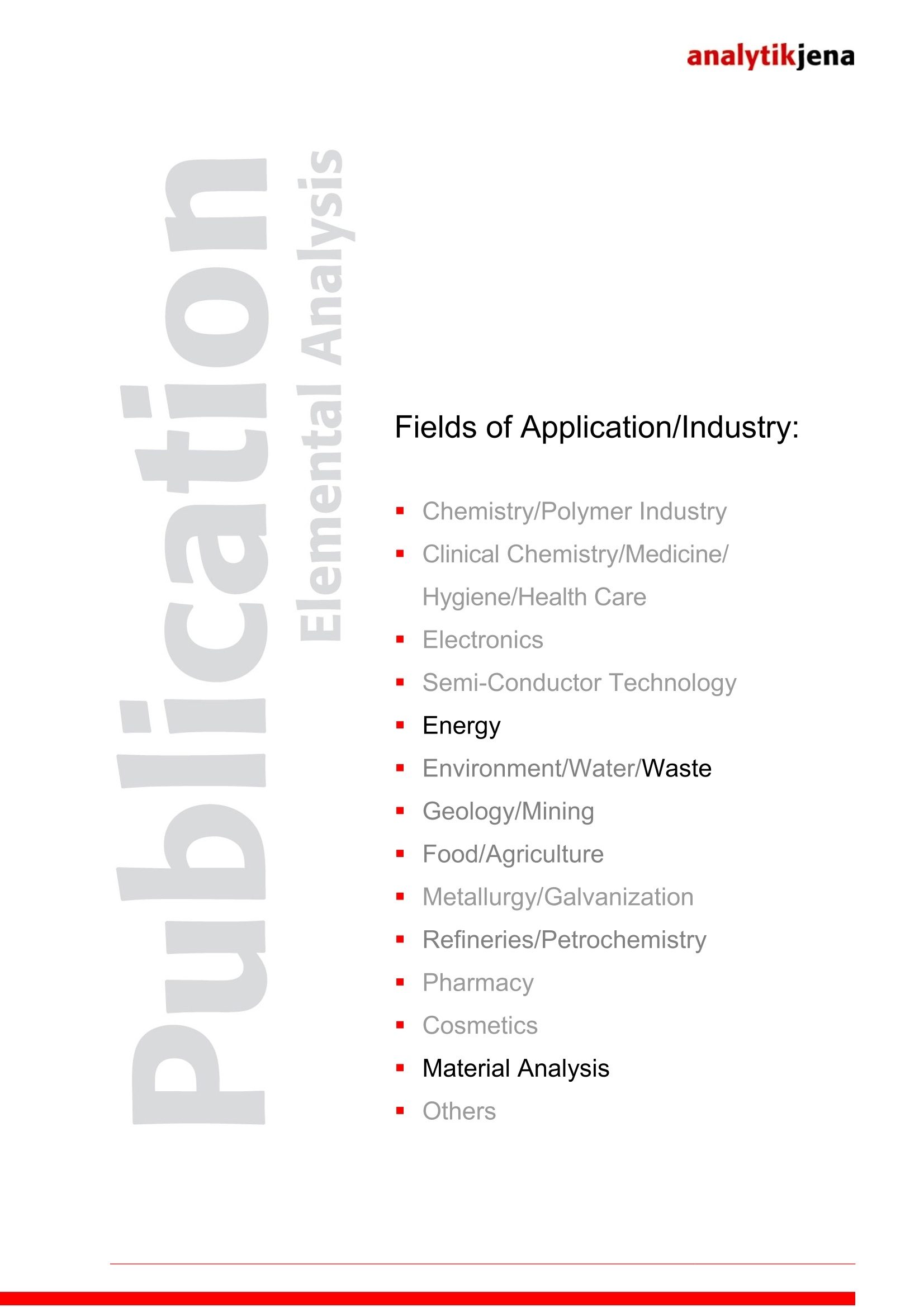
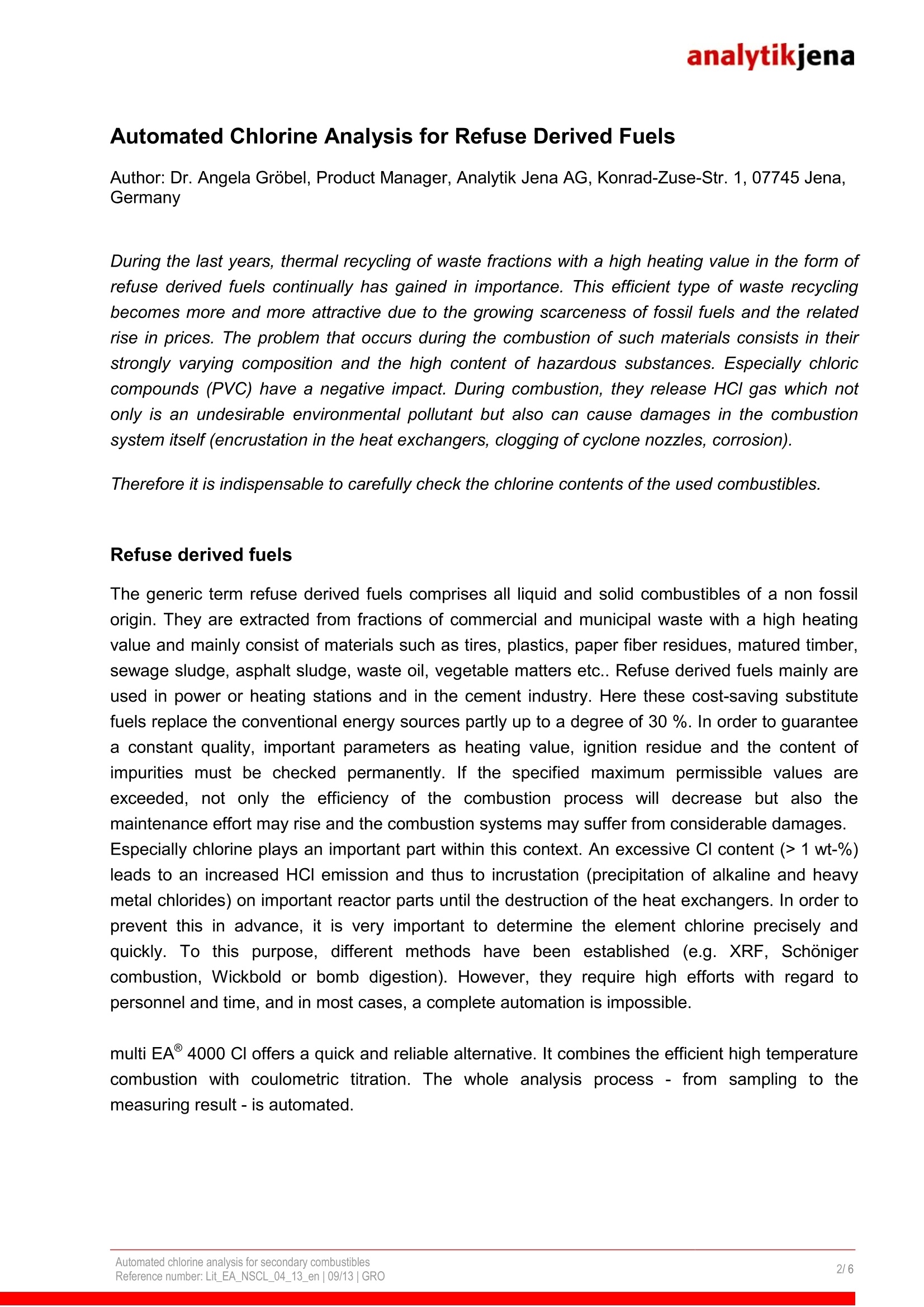
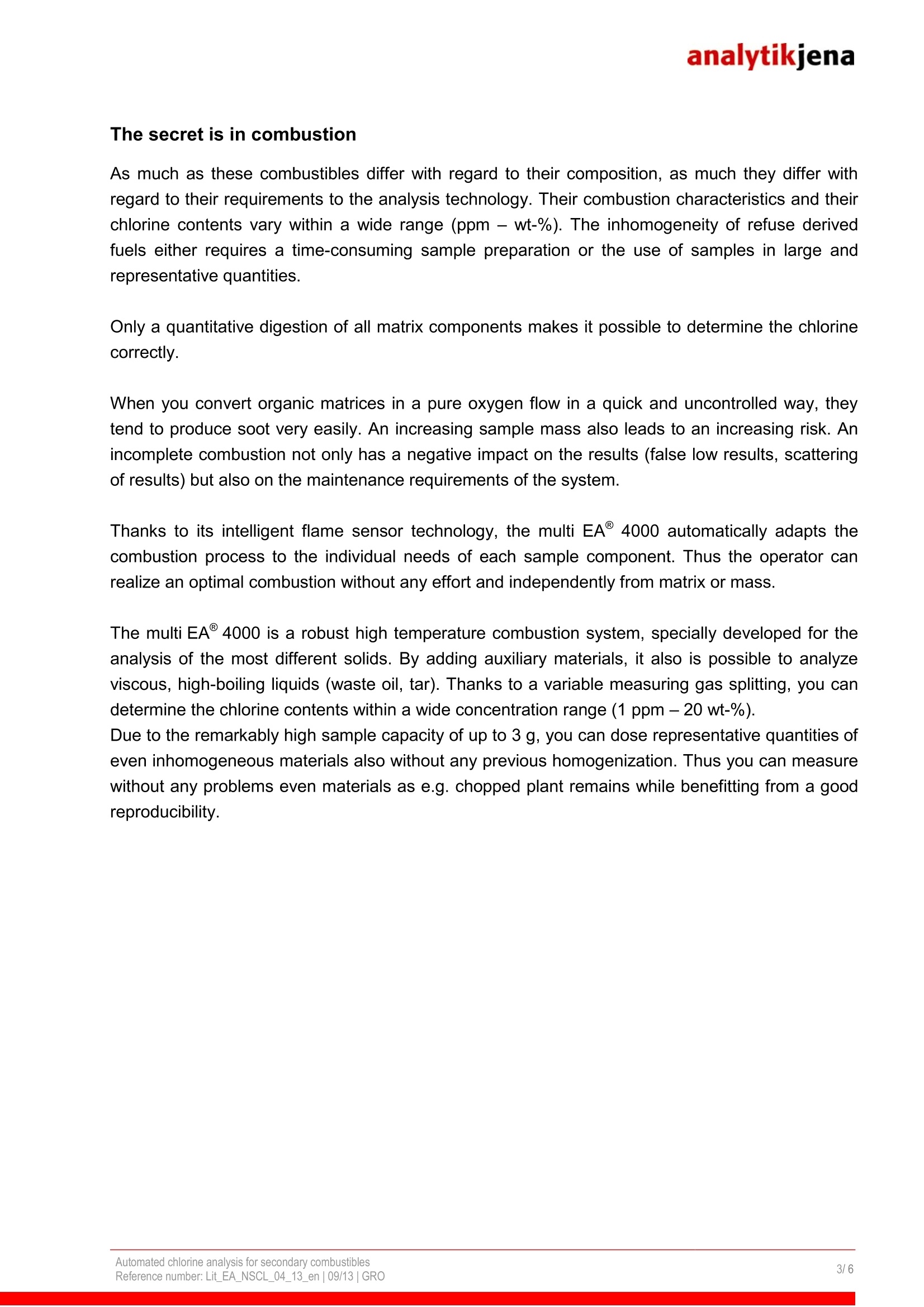
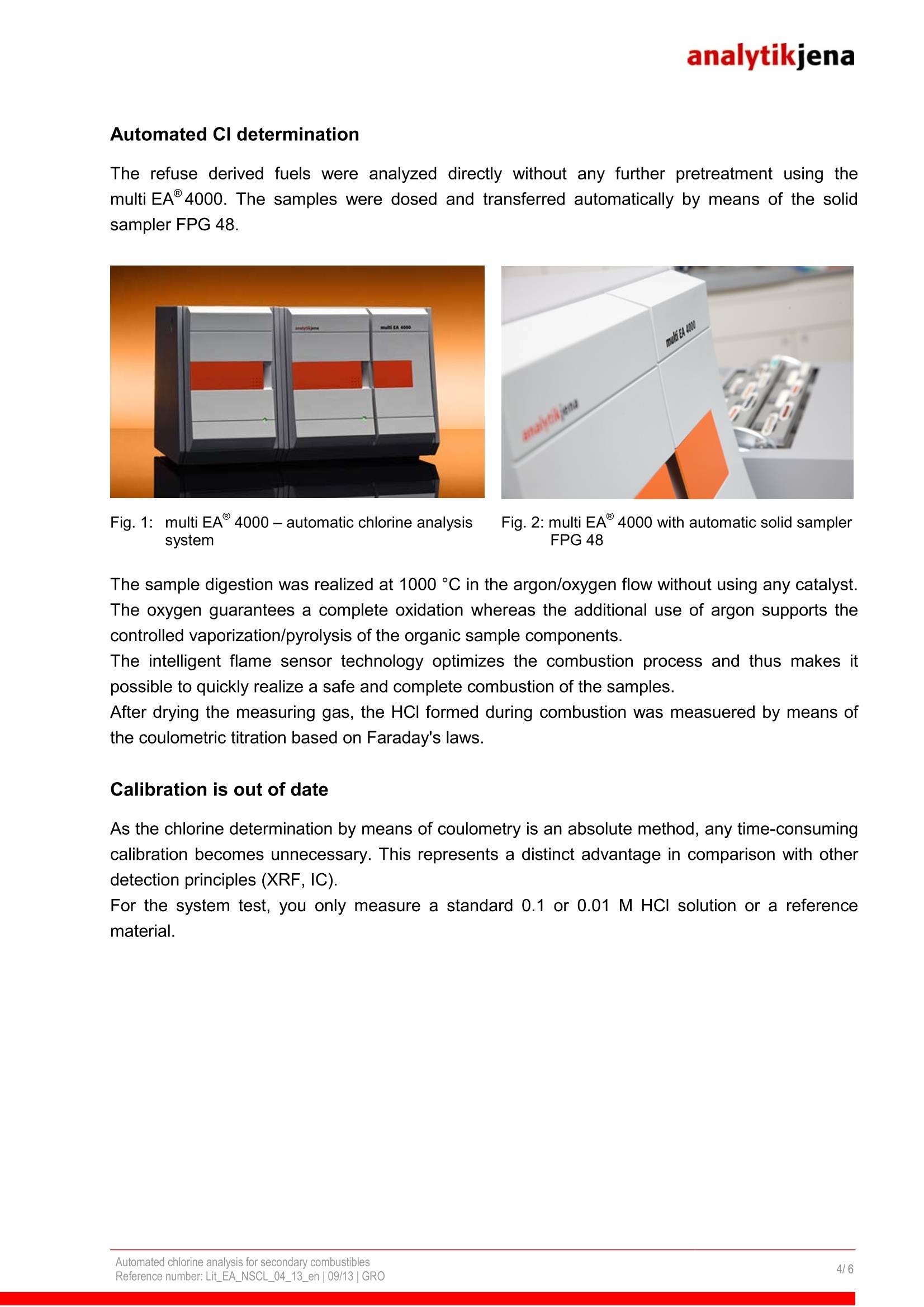
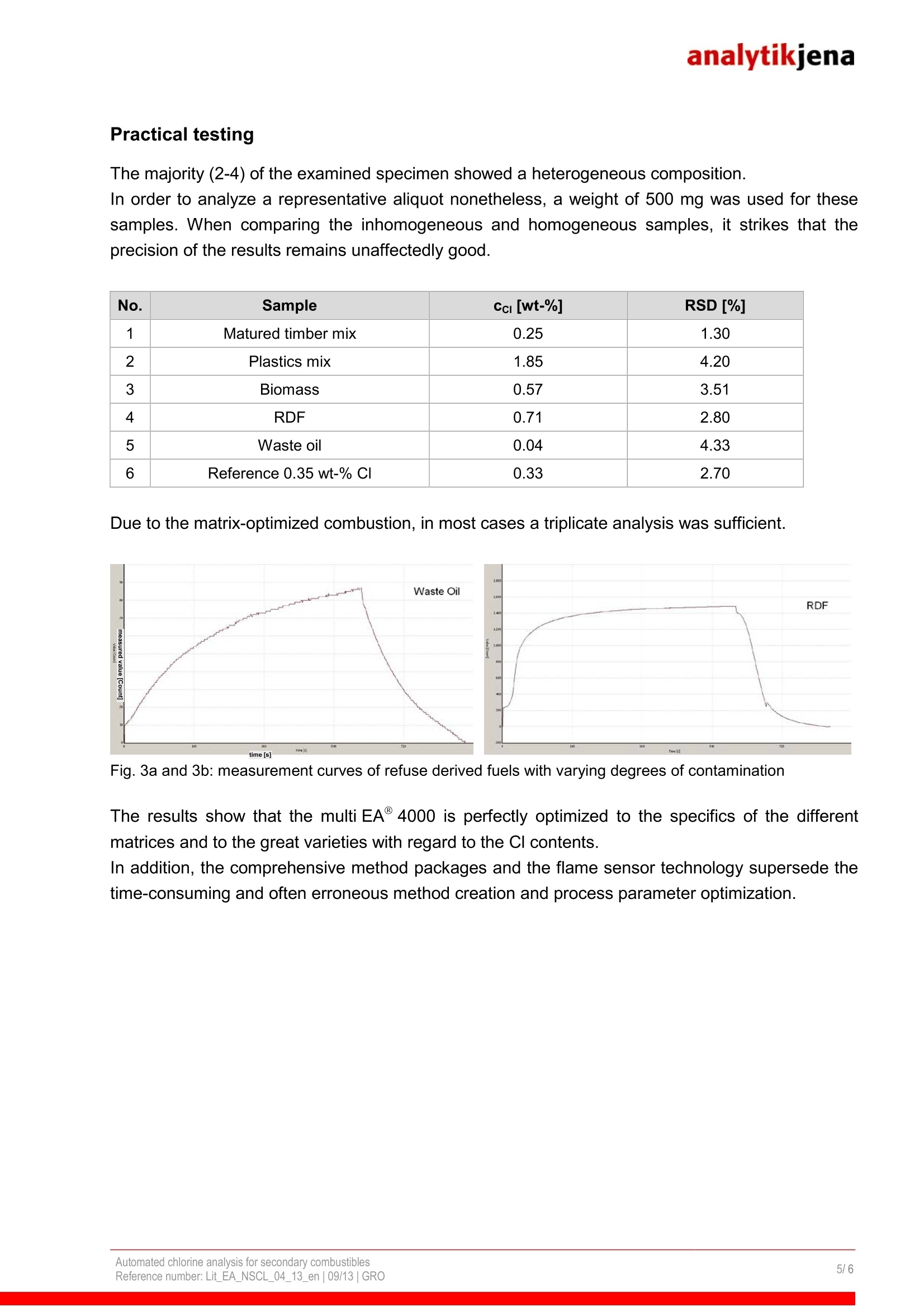
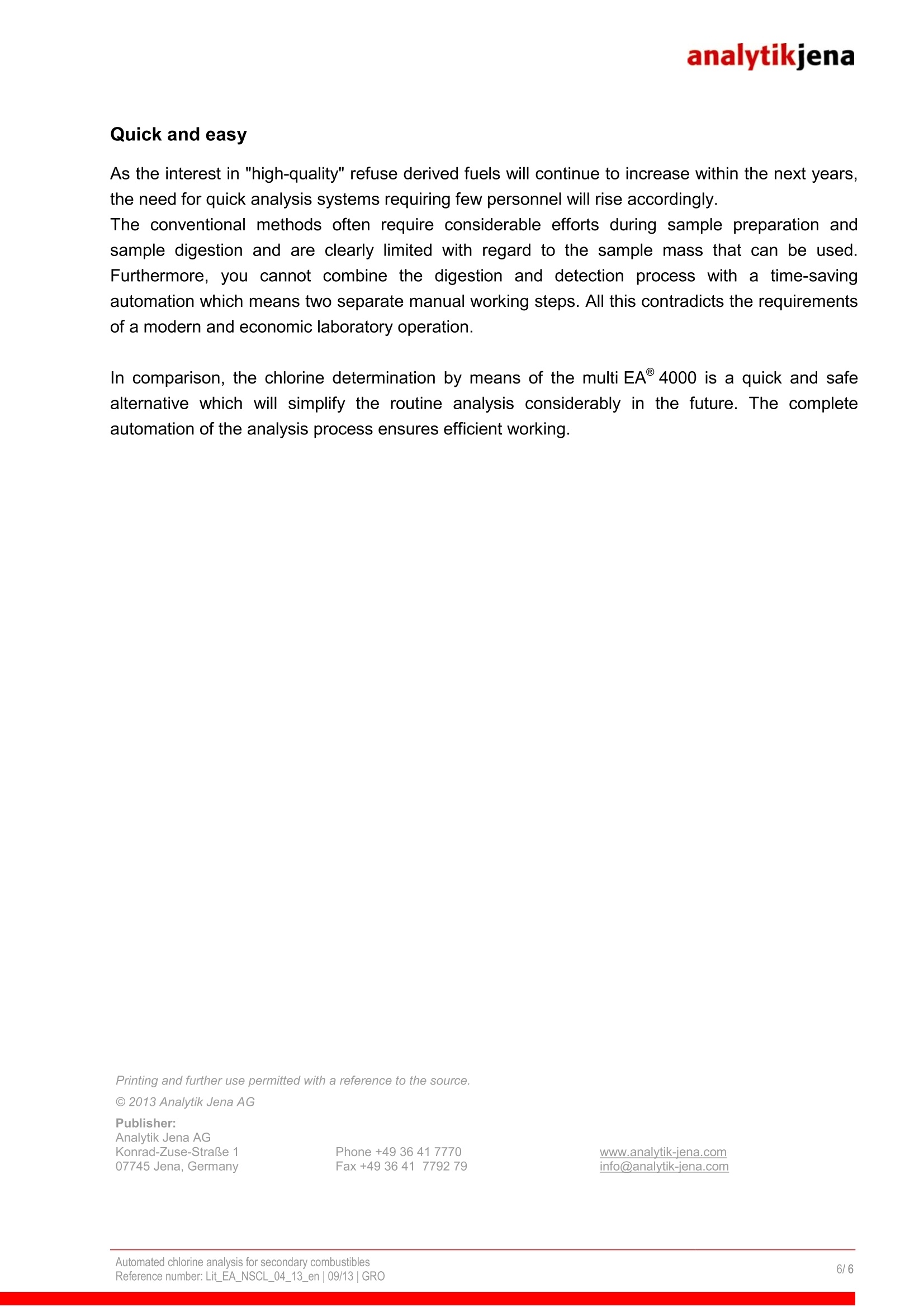
还剩4页未读,是否继续阅读?
耶拿分析仪器(北京)有限公司为您提供《废物衍生燃料中总氯的自动测量》,该方案主要用于其他中--检测,参考标准--,《废物衍生燃料中总氯的自动测量》用到的仪器有multi EA® 5000碳、氮、硫、氯 元素分析仪
推荐专场
相关方案
更多
该厂商其他方案
更多









